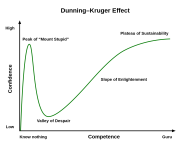Not really, just to understand who can be trusted. Not an easy task.What then is the conclusion: other people's experience is irrelevant, everyone has to evaluate the glare performance of each model for themselves?
A few extracts:
...
Global/ veiling glare and local/ specular glare are so strikingly different, that it’s scarcely credible that you’re unable to distinguish them.
If you truely can’t, then you need to see an ophthalmologist.
Among other things, it would seem to be relatively easy (and a service to others) to distinguish between levels of glare in at least broad terms.
Perhaps along lines such as:
• absent (though maybe just an ideal);
• minimal (present but not obtrusive);
• tolerable (more but bearable), and;
• unacceptable;
rather than the simple Angels vs Monsters distinction.
(As you're a fan of Allbinos with it's numerical rating of various optical qualities, perhaps that's another way to go.)
...
Making an exact hierarchy in terms of glare is difficult for the following reason. A fully immune binocular in a certain light context may have a bit of glare in another context. For example, I stress the binoculars in at least three difficult lighting situations:
1. The full moon (or a desk lamp pointed at the binoculars). I move the moon in all directions in the frame and take it out of the FOV, and notice if there are glare or ghost images
2. During the day, with the Sun strong above, I point my binoculars towards the edge of a dense and dark forest. I can also simulate it at home if I look during the day, with strong sun, under the window at a dark object that occupies my entire FOV. Thus, I try to make the pupil of my eyes dilate a little more than that of the binoculars exit pupil. If the binoculars have disturbing reflections in the immediate vicinity of the exit pupil, this test shows me easy.
3. A test of general situations. Terrestrial panning with binoculars with the Sun in the sky. I move the binoculars so that I have several different angles to the sun. I pay particular attention to the edges of the FOV. I noticed that some binoculars require a much more accurate positioning in the optical axis for this test.
Binoculars that show me strong glare in at least one of these situations I consider without glare resistance. As well as the ones that show me glare very discreetly repetitively in all these tests. The ones that do not show me glare at all, or maybe show me a very discreet glare in at least one of the tests, I consider them resistant to glare...
... For what fault exactly in what situation? What types of glare, observed in everyday or unusual glare-forcing situations?
How significant was it compared to other similar binoculars? ...
About testing:
... If you want to know how glare works in different binoculars do what I have suggested many times here. Using a loop or a telescope eyepiece with a focal length of around 25-28mm focus on the interior of the binocular through the eyepiece under conditions that cause glare. It's best to use a repeatable glare test set-up in which a tripod mounted binocular is pointed toward a very dark area that fills the FOV, but with a bright light source outside the FOV that penetrates into the binocular interior. You will see exactly where the unbaffled interior reflections are. AFAIK hardly anybody has tried this simple test and thus endless guess work and conflicting observations continue on threads like this one.
Sometimes is not the binocular (but not sure):
I get glare systematically with one of my binoculars, when the light is behind me, because the ocular is shorter than the eye relief. But it is not the binocular, is who selected it knowing the situation. Or not understanding the consequences. Or not testing.
Do you agree? Can the buyer be blamed?
Last edited:









